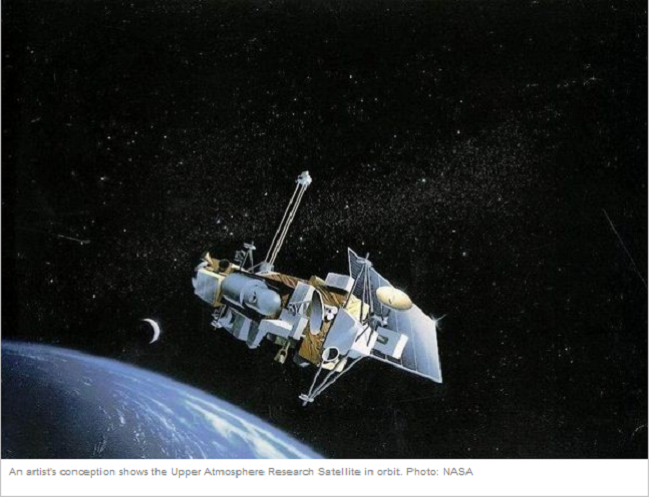Satellite Crashes to Earth, but NASA is Stumped

The NASA climate research satellite that plunged to earth Saturday still has not been found, U.S. space officials say.
The 20-year-old Upper Atmosphere Research Satellite penetrated the earth's atmosphere over the Pacific Ocean, but some scientists believe that it didn't necessarily land in the sea.
NASA said the bus-sized satellite fell sometime between 0323 and 0509 GMT Saturday, but the agency is struggling to pinpoint the exact time or location of any of the 1,200 pounds of debris that landed. Speculation on Twitter points to unconfirmed sightings and even an amateur video of possible debris over Alberta, Canada.
Stephen Cole, NASA spokesman, was happy with the result, despite having little to no information regarding the whereabouts of the debris, saying that the fact its descent began over the Pacific Ocean "gives us a good feeling that no one was hurt."
The estimated flight path took the satellite over Canada, starting north of Seattle, then travelling in a large arc north, then south. It was then destined to continue over the Atlantic and towards Africa.
Cole was hoping to get more details from the U.S. Air Force, which was given the responsibility of tracking the debris, but he admitted the exact landing site may never be known.
Conflicting reports suggest, however, that NASA couldn't possibly have known where the re-entry point was.
Jonathan McDowell of the Harvard-Smithsonian Center for Astrophysics said: "Pieces are falling off of this flaming fireball, and some of it has enough momentum to go hundreds of miles, we don't know where the re-entry point exactly was and we don't exactly know where the debris field is,"
The satellite is the biggest NASA spacecraft to crash into earth since the post-Apollo 75-ton Skylab space station and the 10-ton Pegasus 2 satellite, which both fell from orbit in 1979.
© Copyright IBTimes 2025. All rights reserved.






















